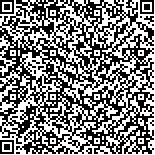|
| 引用本文: | 石凤,周玉婷,李佳霖,高会旺,秦松.海洋聚球藻对不同硝酸盐浓度的响应特征[J].海洋科学,2023,47(11):110-120. |
| |
|
| |
|
|
| 本文已被:浏览 403次 下载 415次 |

码上扫一扫! |
|
|
| 海洋聚球藻对不同硝酸盐浓度的响应特征 |
|
石凤1,2, 周玉婷2,3, 李佳霖2, 高会旺1, 秦松2
|
|
1.中国海洋大学 环境科学与工程学院, 山东 青岛 266100;2.中国科学院烟台海岸带研究所 海岸带生物学与生物资源保护重点实验室, 山东 烟台 264003;3.烟台大学 生命科学学院, 山东 烟台 264005
|
|
| 摘要: |
| 近年来, 由于陆源污染的加重以及近海环境治理的推进, 中国近海海域营养盐浓度发生明显变化, 导致浮游植物生物量及群落结构发生改变。作为一种广泛分布且丰度较高的微微型蓝藻, 聚球藻在中国近海生态系统中发挥着重要的角色, 但其对不同硝酸盐浓度的响应尚待研究。本文分别从渤海和黄海采集聚球藻富集样本, 在不同硝酸盐浓度下进行半连续培养, 通过测定生长曲线、色素含量、光合生理参数以及碳氮含量, 研究聚球藻对硝酸盐浓度的响应特征。当硝酸盐浓度为0.1、1.0、10.0 μmol·L-1时, 聚球藻培养体系可支持的生物量较小, 光能转化效率较低; 当硝酸盐浓度为100.0 μmol·L-1时, 聚球藻细胞生长得到促进, 其培养体系可支持的生物量约提高5倍, 同时培养体系整体的光能转化效率达到最高, 但单位细胞的捕光能力受到抑制, 氮和磷的转化率提高。研究表明海洋聚球藻能够适应不同的硝酸盐浓度维持生长, 在较高的硝酸盐浓度下, 聚球藻生物量显著提高, 但释放至胞外的碳氮未出现相应的当量增加。研究结果为营养盐胁迫条件下浮游生态系统的响应提供了原核微藻方面的实验依据。 |
| 关键词: 海洋聚球藻 硝酸盐 生理响应 生物量 光合作用 |
| DOI:10.11759/hykx20220706001 |
| 分类号: |
| 基金项目:中国科学院海洋大科学研究中心重点部署项目(COMS2020Q09);国家自然科学基金(42176131) |
|
| Response characteristics of marine Synechococcus under different nitrate concentrations |
|
SHI Feng1,2, ZHOU Yu-ting2,3, LI Jia-lin2, GAO Hui-wang1, QIN Song2
|
|
1.College of Environmental Science and Engineering, Ocean University of China, Qingdao 266100, China;2.Key Lab of Coastal Biology and Biological Resource Conservation, Yantai Institute of Coastal Zone Research, Chinese Academy of Sciences, Yantai 264003, China;3.College of Life Sciences, Yantai University, Yantai 264005, China
|
| Abstract: |
| With the increase of land-source pollution input and promotion of offshore environmental restoration in recent years, nutrient levels have changed dramatically around the continental shelf of China, causing changes in the country’s phytoplankton biomass and community structure. Synechococcus, a widely distributed and abundant microcyanobacteria, plays an important role in offshore ecosystems in China. However, its response to different nitrate concentrations remains unclear. In this study, the enriched samples of Synechococcus collected from the Bohai Sea and the Yellow Sea were used as experimental materials for the semi-continuous culture under different nitrate concentrations. The response characteristics of the Synechococcus were demonstrated from the growth curve, pigment contents, photosynthetic physiological parameters, carbon, and nitrogen concentrations. Under nitrate concentrations of 0.1, 1.0, and 10.0 μmol·L-1,Synechococcus exhibited lower biomass and inefficient light energy conversion. Under 100.0 μmol·L-1 nitrate concentrations, the growth of Synechococcus improved, the biomass supported by the culture system increased by approximately five times, and the light energy conversion efficiency reached its highest value in the culture system. Meanwhile, the light-capturing ability of unit cells was inhibited, and nitrogen and phosphorus consumption increased. This study demonstrated that marine Synechococcus could continuously grow under different nitrate concentrations. Under higher nitrate concentrations, the biomass increased considerably; however, no corresponding equivalent increase was observed in the amounts of carbon and nitrogen released into the culture medium. The results provided an experimental basis for the response of prokaryotic microalgae to phytoplankton ecosystems under nutrient stress. |
| Key words: marine Synechococcus nitrate physiological responses biomass photosynthesis |
|
|
|
|
|
|
